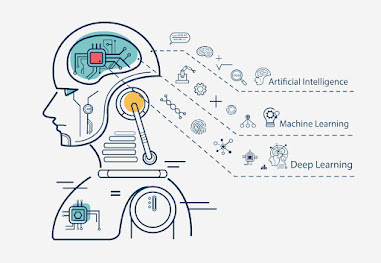The development of artificial intelligence and machine learning (AI & ML)
Introduction
Artificial intelligence (AI) and machine learning (ML) are rapidly advancing fields with numerous applications in various industries, including healthcare, finance, and transportation. AI refers to the simulation of human intelligence in machines, whereas ML is a subset of AI that enables machines to learn from data without being explicitly programmed. In this article, we will explore the development of AI and ML, their applications, challenges, and ethical implications.
History of AI and ML
The concept of AI dates back to the mid-twentieth century, with pioneers like John McCarthy, Marvin Minsky, and Claude Shannon laying the groundwork for the development of AI. However, it was not until the 21st century that AI and ML started making significant progress. The availability of large amounts of data, coupled with advances in computing power, enabled researchers to develop sophisticated algorithms that could process and analyze vast amounts of data.
Applications of AI and ML
AI and ML have numerous applications in various industries, including healthcare, finance, and transportation.
Healthcare
In healthcare, AI and ML are used for disease diagnosis, treatment planning, and drug development. For instance, ML algorithms can analyze medical images and provide more accurate diagnoses of conditions like cancer, heart disease, and diabetes. Additionally, AI and ML are used in drug development to predict the efficacy of potential drugs and identify potential side effects.
Finance
In finance, AI and ML are used for fraud detection, investment prediction, and risk management. For example, ML algorithms can analyze financial data and predict stock prices, identify fraudulent transactions, and provide insights into investment opportunities.
Transportation
In transportation, AI and ML are used for self-driving cars and traffic management. For instance, self-driving cars use AI and ML algorithms to navigate roads, recognize traffic signs, and avoid collisions. Additionally, traffic management systems use ML algorithms to optimize traffic flow and reduce congestion.
Challenges of AI and ML
Despite the numerous applications of AI and ML, there are several challenges that need to be addressed. One of the most significant challenges is the ethical implications of these technologies.
Bias
One of the most significant ethical challenges is the issue of bias. AI and ML algorithms can be biased based on the data they are trained on, which can result in unfair outcomes. For instance, facial recognition algorithms have been shown to have higher error rates for people with darker skin tones, which can have significant implications in law enforcement and security.
Privacy
Another significant challenge is the issue of privacy. AI and ML algorithms require vast amounts of data to train, and this data can include sensitive information about individuals. There is a risk that this data could be misused or stolen, which can have significant implications for individuals' privacy.
Unemployment
Another significant challenge is the potential for job displacement. AI and ML technologies have the potential to automate many jobs, which could result in unemployment and economic inequality.
Conclusion
AI and ML are rapidly advancing fields with numerous applications in various industries. These technologies have the potential to revolutionize healthcare, finance, and transportation. However, there are also significant challenges that need to be addressed, including bias, privacy, and unemployment. To fully realize the potential of these technologies, we need to address these challenges and ensure that they are developed and used ethically.
.jpg)




0 Comments:
Post a Comment
Subscribe to Post Comments [Atom]
<< Home